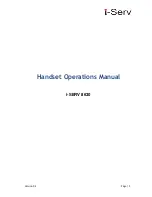
- 1 -
USER WARNINGS
RECOMMENDATIONS FOR THE PROPER USE OF WEIGHING INSTRUMENT
-
Keep away from heat sources and direct sunlight
-
Repair the instrument from rain (except special IP versions)
-
Do not wash with water jets (except special IP versions)
-
Do not dip in water
-
Do not spill liquid on the instrument
-
Do not use solvents to clean the instrument
-
Do not install in areas subject to explosion hazard (except special Atex versions)
RECOMMENDATIONS FOR CORRECT INSTALLATION OF WEIGHING INSTRUMENTS
The terminals indicated on the instrument’s wiring diagram to be connected to earth must
have the same potential as the weighed structure (same earthing pit or earthing system). If
you are unable to ensure this condition, connect with an earthing wire the terminals of the
instrument (including the terminal – SUPPLY) to the weighed structure.
The cell cable must be individually led to its panel input and not share a conduit with other cables;
connect it directly to the instrument terminal strip without breaking its route with support terminal
strips.
Use “RC” filters on the instrument-driven solenoid valve and remote control switch coils.
Avoid inverters in the instrument panel; if inevitable, use special filters for the inverters and separate
them with sheet metal partitions.
The panel installer must provide electric protections for the instruments (fuses, door lock switch
etc.).
It is advisable to leave the equipment always switched on to prevent the formation of condensation.
MAXIMUM CABLE LENGTHS
-
RS485: 1000 metres with AWG24, shielded and twisted cables
-
RS232: 15 metres for baud rates up to 19200
-
Analog current output: up to 500 metres with 0.5 mm
2
cable
-
Analog voltage output: up to 300 metres with 0.5 mm
2
cable
RECOMMENDATIONS FOR CORRECT INSTALLATION OF THE LOAD CELLS
INSTALLING LOAD CELLS
: The load cells must be placed on rigid, stable in-line structures; it
is important to use the mounting modules for load cells to compensate for misalignment of the
support surfaces.
PROTECTION OF THE CELL CABLE:
Use water-proof sheaths and joints in order to protect the
cables of the cells.
MECHANICAL RESTRAINTS (pipes, etc.)
: When pipes are present, we recommend the use of
hoses and flexible couplings with open mouthpieces with rubber protection; in case of hard pipes,
place the pipe support or anchor bracket as far as possible from the weighed structure (at a distance
at least 40 times the diameter of the pipe).
Содержание W100
Страница 40: ......






































